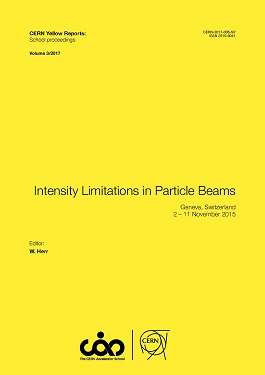Multi-bunch Feedback Systems
DOI:
https://doi.org/10.23730/CYRSP-2017-003.471Keywords:
Multi-bunch, feedback systems.Abstract
Coupled-bunch instabilities excited by the interaction of the particle beam with its surroundings can seriously limit the performance of circular particle accelerators. These instabilities can be cured by the use of active feedback systems based on sensors capable of detecting the unwanted beam motion and actuators that apply the feedback correction to the beam. Advances in electronic technology now allow the implementation of feedback loops using programmable digital systems. Besides important advantages in terms of flexibility and reproducibility, digital systems open the way to the use of novel diagnostic tools and additional features. We first introduce coupled-bunch instabilities, analysing the equation of motion of charged particles and the different modes of oscillation of a multi-bunch beam, showing how they can be observed and measured. Different types of feedback systems will then be presented as examples of real implementations that belong to the history of multi-bunch feedback systems. The main components of a feedback system and the related issues will also be analysed. Finally, we shall focus on digital feedback systems, their characteristics, and features, as well as on how they can be concretely exploited for both the optimization of feedback performance and for beam dynamics studies.Downloads
Published
2017-07-25
Issue
Section
Articles
License
Authors who publish with this publication agree to the following terms:
- CERN retains copyright and publishes the work licensed under the Creative Commons Attribution License 4.0 that allows others to share the work with an acknowledgement of the work's authorship and initial publication in this series.
- Authors are able to enter into separate, additional contractual arrangements for distribution of the published version of the work (e.g., post it to an institutional repository or publish it in a book), with an acknowledgement of its initial publication in this series.
- Authors are permitted and encouraged to post their work online (e.g., in institutional repositories or on their website) prior to and during the submission process, as it can lead to productive exchanges, as well as earlier and greater citation of published work (See The Effect of Open Access).

